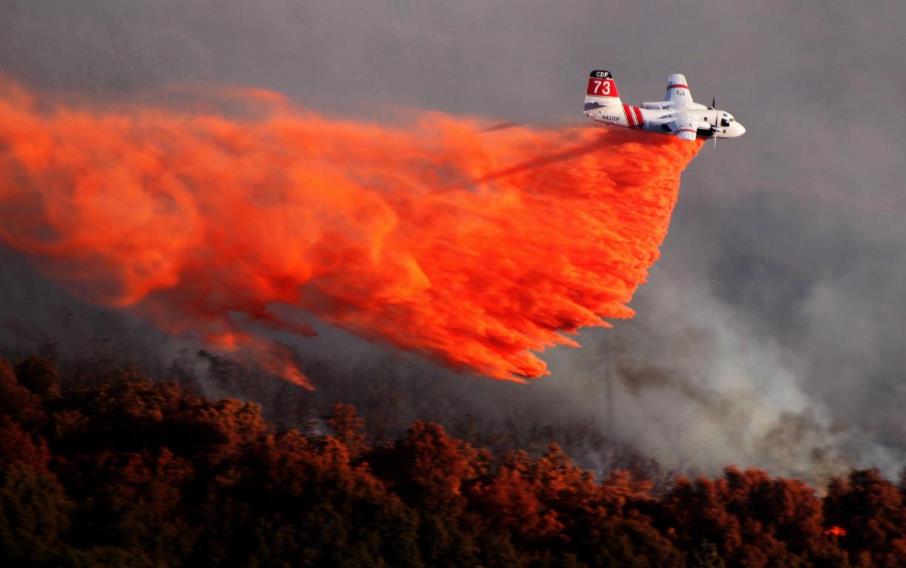Fighting fire from the air
October 7th, 2016 at 7:59 pm (Flying, Society)
In late June, a forest fire came within a mile of my house. I stood outside transfixed, watching the firefighting planes dive and drop red fire retardant in a scarlet line on the hillside to keep the fire from reaching us. Truly awe-inspiring!
I’m now preparing to interview one of those pilots, for a course project. California’s state firefighting organization is CalFire, which employs helicopter pilots year-round and airplane pilots seasonally. CalFire has 23 Grumman S-2T airtankers that drop the fire retardant, and two of them are based nearby at the Hemet-Ryan Air Attack Base. You can browse California’s most recent fires.
This is not an easy job, and the qualifications are steep – 1500 hours of flying experience, 1200 of which as pilot in command. To pilot an airtanker, you must also have commercial, multi-engine, and instrument ratings. You have to be willing to fly low and slow, in steep terrain, with powerful winds and in the heat. Any one of those is a risk factor, and combining them all together makes for some of the most challenging flying out there.
Aerobatic pilot superstar Patty Wagstaff has also joined CalFire: she doesn’t fly the large airtankers but instead flies smaller tactical aircraft, in which she helps the flight supervisor monitor the fire and coordinate its response. Talk about precision ground reference maneuvers!
But the job is risky (pilots die), and the planes are expensive, and there is some debate about whether they are a cost-effective way to fight fires. Yet by now the public expects to see them out there on the front lines, and I can attest that it was very cheering to see them keeping that fire away from my home. (It is impossible to see all of the ground firefighters from the same distance, sadly!)
I’m very much looking forward to talking to one of these pilots in person! So many questions to ask. :)
